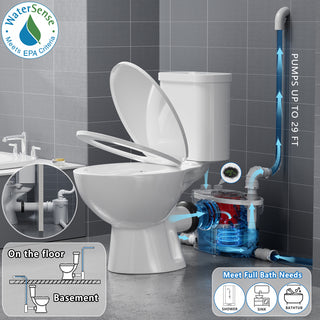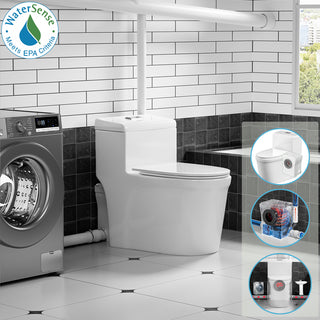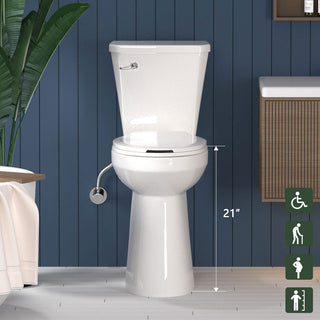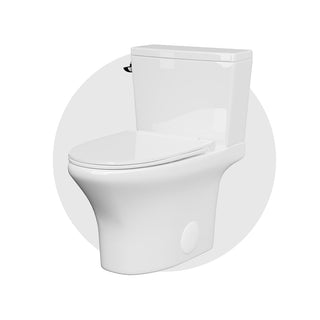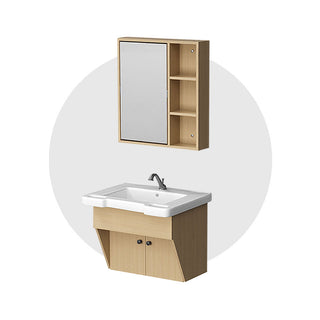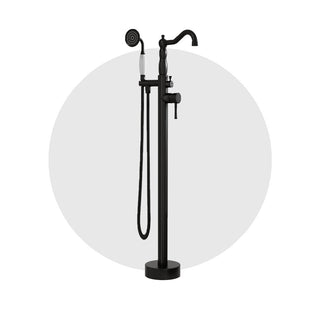When shopping for a new toilet, you'll likely come across terms like chair height, comfort height, and standard height. These labels can be confusing—especially when they’re often used interchangeably. So what exactly is a chair height toilet, and how tall is it?
Let’s break it down.
What Is a Chair Height Toilet?
A chair height toilet is designed to make sitting down and standing up easier—just like sitting in a regular chair. It's often recommended for taller individuals, seniors, or anyone with limited mobility.
But here's the catch: “Chair height” is not a regulated industry standard. It’s a marketing term that generally refers to toilets with a seat height between 17 and 19 inches, measured from the floor to the top of the seat.
This height closely mimics the average chair seat height, which is why it feels more natural and comfortable for many adults compared to standard toilets.
How Tall Is a Chair Height Toilet, Exactly?
Chair height toilets typically measure 17 to 19 inches from floor to seat, including the seat. Without the seat, the bowl height is usually around 16.5 to 18 inches.
For comparison:
| Toilet Type | Seat Height (incl. seat) |
| Standard Height | 14–15 inches |
| Chair Height | 17–19 inches |
| ADA-Compliant | 17–19 inches |
While chair height and ADA-compliant toilets often share the same height range, not all chair height toilets are ADA-compliant unless they meet additional guidelines such as flush controls and clearance space.
Chair Height vs. Comfort Height: Are They the Same?
In most cases—yes. Chair height and comfort height usually refer to the same height range (17–19 inches). The difference lies in the branding:
- Comfort Height is a term commonly used by Kohler.
- Chair Height is a more generic industry term, widely used in product descriptions by brands like American Standard and TOTO.
So while the terms differ, the actual seat height is generally the same. Always check the specifications before buying to be sure.
Who Should Choose a Chair Height Toilet?
Chair height toilets are ideal for:
- Seniors – Easier to get on and off without straining knees or hips
- People with limited mobility – More comfortable transitions
- Taller individuals – Reduced squatting motion
- Homeowners remodeling for ADA compliance – Meets required height range
However, these toilets may not be ideal for:
- Children or shorter adults – Their feet may dangle, making it uncomfortable
- Users accustomed to traditional toilets – May feel "too tall" at first
Installation Tips and Considerations
Before you choose a chair height toilet, keep these points in mind:
- Measure your rough-in to ensure proper fit
- Double-check bowl height with and without the seat, as some listings exclude the seat height
- Match the style with your bathroom layout—elongated bowls often come in chair height options
Conclusion: Is Chair Height Right for You?
A chair height toilet typically stands 17 to 19 inches tall, mimicking the feel of a regular chair for easier, more comfortable use—especially for adults, seniors, or those with mobility challenges. Though often the same as comfort height toilets, the name may vary by brand.
* The best way to decide? Consider who will be using the toilet most often, and don’t forget to test the height if possible before committing.
FAQs
Q1: Is chair height the same as ADA?
Not always. Chair height toilets meet the height range but must meet other ADA requirements to be fully compliant.
Q2: What is the tallest chair height toilet?
Some models go up to 19 inches at the seat, which is the upper limit for ADA toilets.
Q3: Is 17 inches considered chair height?
Yes. Any toilet 17 inches or higher at the seat is typically classified as chair height.
Q4: Can a chair height toilet be too high?
For shorter users or children, it might be. If your feet don’t rest flat on the floor, it could feel awkward or uncomfortable.


